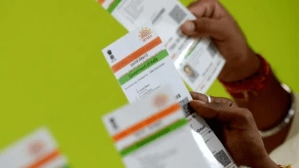Kaliprasanna Singha, an affluent zamindar (landlord), lives in a sprawling mansion with his 28 family members. It’s a typical Raajbari of the 19th-20th century Calcutta with an expansive courtyard and rooms all around it. The erstwhile landlords’ taste for English ways is well-known, and that fusion of Bengali tradition with colonial culture can be witnessed all around.
However, Kaliprasanna Singha is a fictional character and the haveli in question is Raajkutir, an IHCL SeleQtions hotel in Kolkata. Every nook and cranny of this property is carefully designed to tell the tale of how Singha would have lived, adding bounty to the experiential stay, where one simultaneously feels being transported back in time and living in a fictitious world of the bougie zamindars. The fact that Raajkutir stands in the heart of this bustling city, while still feeling aloof, quiet and personal, adds another layer to the whole experience.
The design and hospitality offered are as interesting as the concept. After entering this expansive property, you head to the reception where you are greeted with chandan tika, and offered a wet towel to wipe off the city’s heat and humidity. An old banyan tree stands tall, where countless threads lay tied. “Here, when guests come in, they tie a thread and make a wish,” says Riki Mukherjee, the front office manager at Raajkutir.
Inside this haveli-themed hotel, the old-style Bengali architecture fused with a dash of English elements appears prominent. So, instead of tile flooring, one will find marble and Kota stone. The modern bed is replaced with the four-poster bed. Even the key cards that are in use at every other hotel are replaced with the old-school key, where one needs to insert the key in the keyhole and rotate for the door to open.
While rooms in a hotel are distinguished on the basis of category, here every room is assigned a name, as if belonging to a member of Singha’s family, oozing the old-world charm while also exhibiting the personality of the person who is imagined to have lived there. So, the Raja Babu room is adorned with swords as he loved playing with the weapon. There is a Chota Babu room and that of Sadhu Baba, as if these rooms are a testimony that these fictional characters resided here.
The rooms have balconies and terraces, unlike you find in any modern building, which is interesting as the property itself only came up a few years ago. There are large fans, louvered shades and grand arches. Vintage décor, paintings from the Bengal School of Art, and old-school furniture all work in perfect tandem to offer its guests a slice of history and the zamindar experience.
Above all, there is an expansive courtyard. Designed as a two-storied haveli, all rooms open to this courtyard, which offers a perfect site to socialise, relax and just savour the nature around. The real action happens in the evening. The sandhya aarti (evening prayer), which includes the lighting of earthen lamps by the revered tulsi plant accompanied by the blowing of the conch shell elevates the serene spiritual experience, followed by a cultural programme of folk dance and music. What is Bengal without its jhalmuri? In one corner, the chef whips up some delicious jhalmuri on a cart which is served with piping hot cutting chai.
Notably, while Raajkutir’s identity stems from the old-school charm and vintage elements, it also has all the modern-day amenities such as a gym, a swimming pool and a spa.
A major part of Bengal’s culture remains its food, and Raajkutir offers a distinct culinary experience too. The East India Room, Raajkutir’s main restaurant, offers Bengali and colonial cuisine. “We have such items in our menu that you will not find anywhere or just a few select old restaurants,” says Suvrat Misra, sales manager at Raajkutir. Dining at the East India Room, where both its décor and menu are designed to capture the soul of colonial Bengal, offers you an excellent culinary experience—a perfect fusion of the quintessential Bengali cuisine with European elements. Then there is Loafer’s Cafe, known for its Victorian-style high teas. The Swig bar serves as a good place to have a drink or two.
While the hotel is big on the leisure segment, business travellers, too, remain prominent in its overall clientele. Weddings bring sizable revenue, while the hotel also serves as a good escape for a staycation by locals finding respite from the hustle and bustle of the city—Raajkutir surely has something to offer for everyone.









